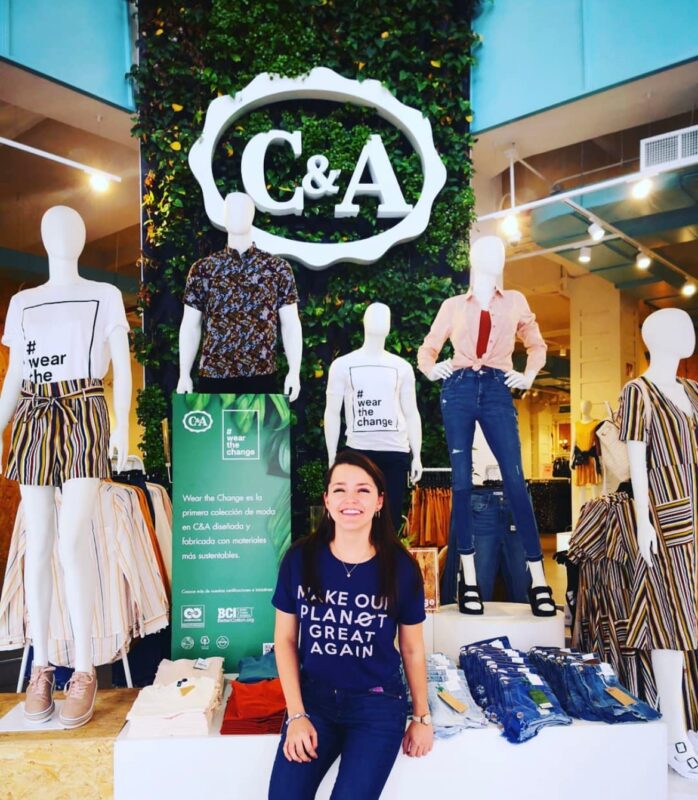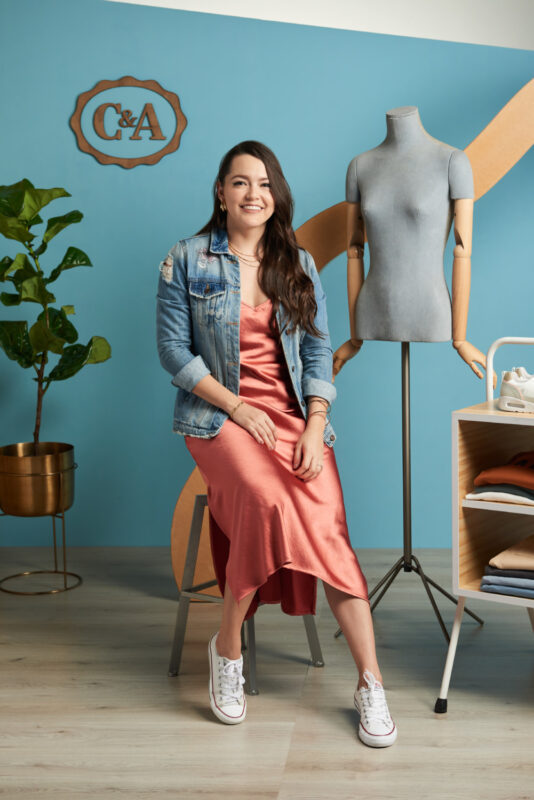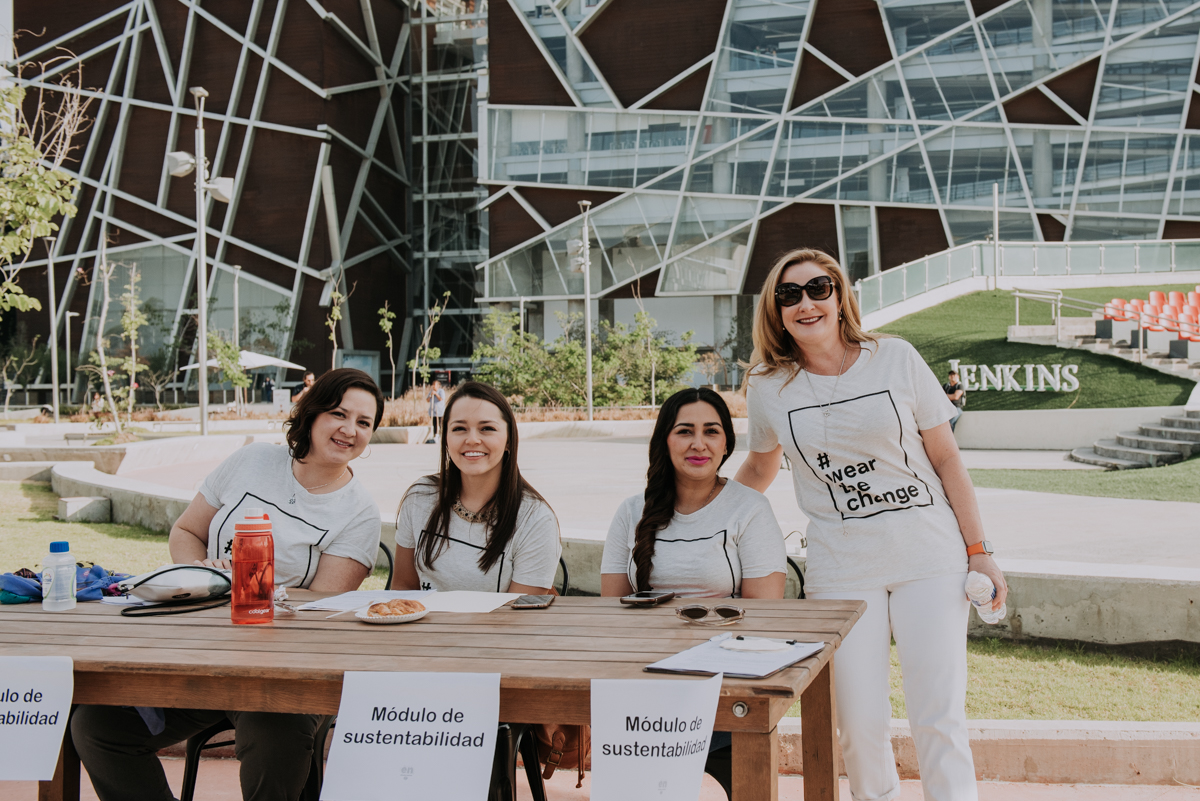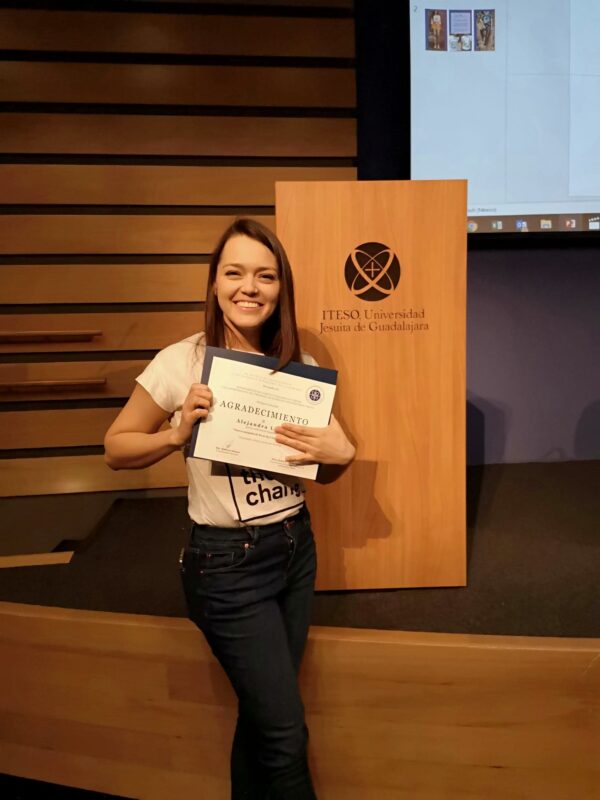We are facing a climate crisis, and the effects are already being felt all across the world. From unprecedented heatwaves to deadly flash floods, rising sea levels to biodiversity loss, among others’ problems. Globally, the fashion industry is the second most polluting industry after the oil and gas sector. Responsible for 1.2 billion tons of greenhouse gas emissions annually, it has had a devastating impact on the planet. Throughout the entire fashion supply chain, natural resources are extracted, habitats are exploited, toxic emissions are produced, water is polluted, and waste is carelessly dumped.
“Trying to see sustainability as an easy-to-solve “issue” it’s the wrong approach, as there are multiple layers of issues, and many stakeholders involved in the whole system”
Fortunately, there are companies in this sector committed to changing this reality: C&A.
C&A is a European fashion retailer, that has a 2028 global sustainability strategy for key markets in Europe, Brazil, Mexico, and China. This strategy includes ways to inspire customers to make more sustainable choices, ambitious science-based targets addressing climate change, and an even greater focus on circularity. So, I had the pleasure to talk to Alejandra Sánchez Ayala, Sustainability Leader at C&A Mexico, to discuss some of its initiatives and what fashion consumers can do to care for our environment.
We know that the fashion industry faces big challenges, the negative impact on the environment as unsustainable consumption, and land degradation, it is responsible for greenhouse gas emissions and for contributing by exploiting our planetary resources as well as perpetuating poverty by denying workers living wages and healthy working conditions, what are the factors that hold back fashion corporations to become more sustainable?
There is not a simple answer for this question, as many factors play a role. There is a systemic issue related to the complexity of a global supply chain, and that is true for fashion and many other industries. A big challenge is the different levels of maturity throughout the supply chain, where brands can take part into working with suppliers who align to their own code of conducts and rules, but the follow up requires that companies have people working exclusively on these topics.
There are also specific challenges related to the difference of legal requirement in different countries, and the complexity of implementing global programs into local contexts with the tools available in each country. For example, a fashion corporation might have ambitious aspirations in terms of buying clean energy, but if the electricity grid in a certain country doesn’t allow to do this transition, the execution in a local level would be impossible.
“We audit all the factories involved in the production of the garments that we sell on stores, but also, we give them free consultation on how to improve their practices"
In terms of labor, where some countries might have regulations that are strong enough in paper if the follow up by the government is not in the same level, that might create a domino effect where only complying with the law is seen as a very hard thing to do for some factories, and anything extra it perceives as excessive.
Also, sustainability is a complex concept, with several layers where many different topics converge. We can be talking about climate change, water savings, use of chemical substances, fair labor, clean energies, circular economy, etc. Some garments might have better performance in some of these indicators but probably not in all, and not all issues are equally important in all contexts. For example, if you are working in a high hydric stress area, using water more effectively is more critical in the short term than other issues. Trying to see sustainability as an easy-to-solve “issue” it’s the wrong approach, as there are multiple layers of issues, and many stakeholders involved in the whole system.
You lead the Sustainability program of C&A Mexico, based on the Sustainability Global Framework 2028 of C&A, can your share with us a little bit about this framework?
In 2020 we completed the implementation of our 5-year global sustainability strategy, where we focused in three pillars: sustainable products, sustainable materials, and sustainable lives. In 2021, we shared our vision for 2028, while focusing on similar topics but with a broader vision. Now all our strategies are based on three pillars, now called: People, Planet and Future.
As a brand we know we want to focus on products and materials, but also on the people involved in the manufacturing of our garments and with an eye on the future, in terms of new materials and more sustainable practices. In Mexico, we are a team of eleven professionals working full time on sustainability and social responsibility, but also, we collaborate with other internal teams to make a bigger impact: from Sourcing, Commercial, Design, Marketing to Operations and Human Resources.
In C&A we have this constant reminder that sustainability is a core value for the company, and we incentivize our supply chain to elevate their practices and we support them in the process. We audit all the factories involved in the production of the garments that we sell on stores, but also, we give them free consultation on how to improve their practices and train them on relevant topics of safety and fair labor.
“It’s important that the transition towards a more sustainable fashion is supported by consumers, but also brands, innovators, entrepreneurs, and governments”
We work with the suppliers with wet processes, that usually use more chemical substances, to improve the quality of the water they discharge, and to give them the tools to understand where the bigger impacts are. We also believe in local alliances, proof of this is our program ReutiliC&A, where we give our customers the option to leave old garments in our stores and we collaborate with a local partner to extend the lifecycle of this products by reusing or recycling them.
You have been laureated with two recognitions: Meaningful Business 100 in 2022, which celebrates leaders combining profit and purpose to help achieve the United Nations Sustainable Development Goals, and GreenBiz “30 under 30” for 2019, an internationally recognized list of young leaders working in Sustainability, what does it drive you?
It’s always nice to be recognized for your professional work, and right now it’s a good moment to be working in sustainability, as many things are happening, and the global networks are becoming bigger. I am an environmental engineer and back when I was starting my major in college, in 2008, I didn’t have a lot of clarity of what kind of jobs I could get as a graduate. We as students just continuously hear that it was one of the “majors of the future”, but nobody was able to tell us what kind of jobs we would have. It’s funny because none of the roles I’ve had in my career existed back in 2008, so it’s amazing to see how this field is evolving.
My favorite part of both awards it’s the new professionals contacts that I have acquired as a consequence of appearing on those lists. One of the greatest things of working in sustainability it’s that a lot of information flows freely between networks, as there is a genuine interest in making things happen, so people is very candid on sharing their knowledge, struggles, ideas, and contacts.
I also teach a university class about Sustainability Design in Fashion for Fashion Designers, and I’m always telling my students that if they see an idea they like, they can research who is doing that and find a way to contact them, through their own websites, Instagram, or LinkedIn, and usually people will reply and share valuable information. It’s almost like magic. People like to help others who are trying to do things in a more sustainable way.
Tell us more about your role, what exactly do you do, and the impact it has on the operation of the company.
I am the Sustainability Leader, and my role is to lead the implementation of the Sustainability Strategy in our operations in Mexico. I lead a team of 10 very passionate professionals who work in topics related to people in the supply chain, environmental initiatives, and social responsibility. I report directly to our CEO, Kelly Kroger, and that is also an indicator of how important sustainability is for our company.
In the work we do as a team we are directly visiting the factories that manufacture our products, which are over 100 in Mexico, we also operate several environmental programs in the factories and in our stores. Although sometimes it’s a challenge to implement a global program in a local context, we have found a lot of interest from suppliers to continue to perform better in our labor and environment audits, and we notice that inside of the company there is a lot of interest for us to continue to do better in the way we produce and sell fashion.
What are the most significant achievements that C&A has reached in the topic of sustainability?
Here are some of the most important achievements we have had as a company in the last couple of years:
- C&A Mexico has obtained the #1 place in the two editions of the Fashion Transparency Index in Mexico launched in 2020 and 2021 by Fashion Revolution Mexico. The index is based on an international methodology to measure how transparent brands are in Mexico.
- C&A is one of the few brands in Mexico that implement the Zero Discharge of Hazardous Chemical Substances (ZDHC) program, which currently covers 78% of the products sold in stores.
- We have an audit and development program for the suppliers and factories that works with us. In 2021, 80% of our products came from the local factories with the best ratings. We work with more than one hundred factories in Mexico.
- All the denim sold at C&A is manufactured in Mexico. Since 2019 we have implemented a program called Biowash with our national suppliers, where we have achieved savings of up to 60% of water in the laundry process during production (which gives the final look to jeans, shorts, skirts, and denim jackets). In 2020, 29% of our denim product was Biowash and in 2022 we managed to increase it to 95%. Since 2019 we have saved almost 400K m3 of water.
- We are part of the Grupo Rector led by Save the Children that aims to develop tools, materials, awareness workshops, and support for factories that want to develop best practices to prevent child labor in the textile and footwear industry in Mexico.
- ReutiliC&A is our garment recycling and life extension program, through which we have collected more than 10 tons of garments since 2019 (even though the program was temporarily paused in 2020), garments that have been reused or recycled. We worked with a Mexican business partner to develop the program.
- In 2022, 54% of the cotton used in our garments was more sustainable. In Mexico we have been great promoters of the use of more sustainable materials.
- As part of our donation program we have donated an average of 50,000 pieces annually to different Nonprofit organizations.
- Every year C&A publishes its sustainability report with the relevant metrics of the achievements in the current year. In 2022, C&A Mexico published its exclusive report on the Mexican market for the first time. It can be found at this link: https://www.cyamoda.com/sustentabilidad.html
What can we do as a society/fashion consumers to change our current complex reality?
I would say that the greatest asset we have as consumers is access to information. It’s important to research about what the brands that we like are doing and how they are communication these strategies. In general, it’s important to pay attention on transparency and how open brands are about how they are working, search for garments with better materials and that seem durable. Fashion is a very complicated industry, and a lot of people work on it, in all stages of the production, since design, manufacturing of materials, garments, transport, stores. So, it’s important that the transition towards a more sustainable fashion is supported by consumers, but also brands, innovators, entrepreneurs, and governments.
In a more personal level, a very important part of the care of garments is related to washing, it´s important to know how to treat different materials and which ones don’t need to be wash after every use. Also, to know who to fold or hang clothes to make them last longer. A good practice is also to learn how to repair or know where to take our clothes for more complex alterations. A more sustainable garment doesn’t only depend on materials and processes, but also on how last it does long and how many times it is used.







